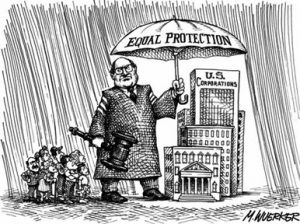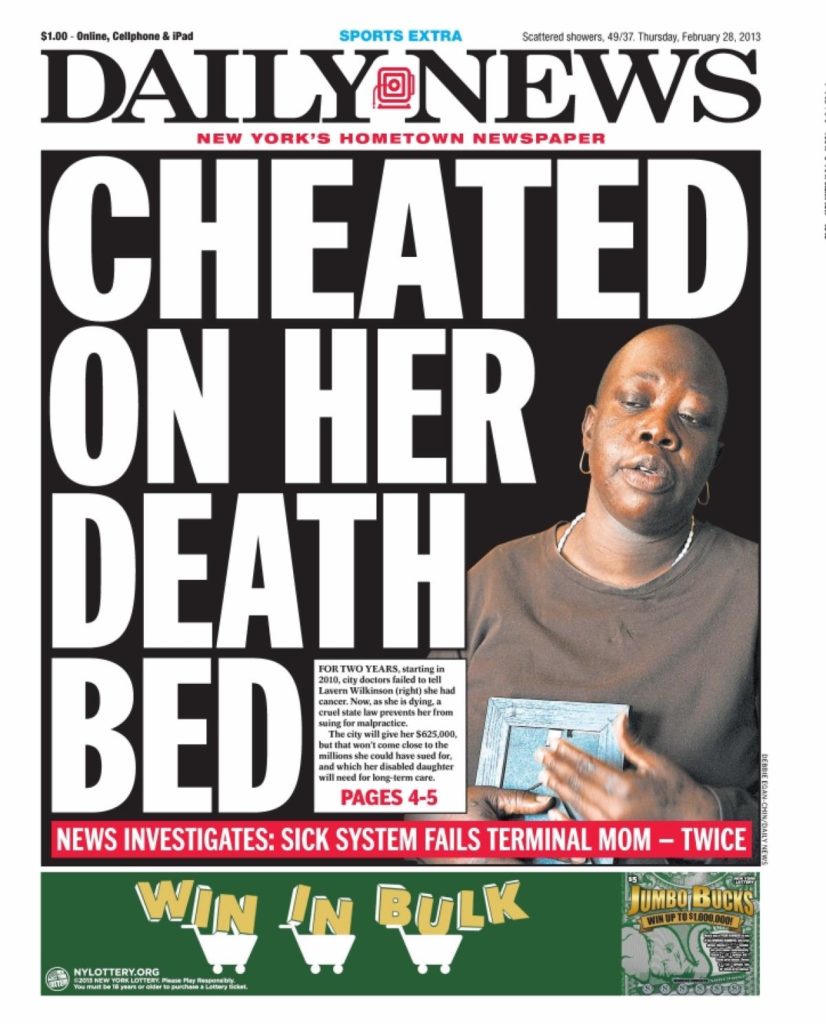 When I use this blog to write about tort reform, it’s often with scare quotes around the reform. Because reform means to improve something, not destroy it. When that phrase is commonly used, however, it’s used in conjunction with finding ways to close the courthouse doors to those who’ve been injured or wronged.
When I use this blog to write about tort reform, it’s often with scare quotes around the reform. Because reform means to improve something, not destroy it. When that phrase is commonly used, however, it’s used in conjunction with finding ways to close the courthouse doors to those who’ve been injured or wronged.
But that doesn’t mean that real tort reform isn’t taking place. Just this past year we saw three bills pass the New York Legislature by wide bipartisan margins, all currently awaiting the signature of Gov. Andrew Cuomo:
- A subtle change in mandatory supplemental insurance if you are hit by an uninsured or underinsured vehicle that is likely to have a very dramatic positive effect for most drivers that carry more than the minimum insurance;
- A “date of discovery” rule for medical malpractice cases, so that the statute of limitations starts to run in cancer cases from the date the malpractice could reasonably have been discovered, not from the actual date of the malpractice; and
- A change regarding venue, so that cases can now be brought where a collision actually took place, even if none of the parties live in that county.
But there are more bills in the hopper, and by hopper I mean pending at various points in the vast legislative maze that needs to be navigated before any bill becomes law. Sam Senders, one of my readers who does structured settlements for Arcadia Settlements Group, put together a short list that he shared on LinkedIn, that you see below.
Perhaps if people started using the phrase tort reform properly it would shine a big, bold light on those that actually try to deform the civil justice system by slamming the courthouse doors closed on consumers.
Sam’s list of bills, with my editorial comments, that constitutes real tort reform:
—————–
1: Admissibility of an Opposing Party’s Statement: This bill modestly changes a hearsay rule by making admissible statements made by a company’s agent or employee. This change is supported by the State Courts of Superior Jurisdiction Committee and Tort Litigation Committee.
2: Apportionment of liability: This bill comes into effect in tort cases where one defendant has settled, so that the remaining defendants must elect prior to trial whether to reduce liability by the amount of the settlement or by the amount of the equitable share of damages delegated to the settler in the verdict. Currently, the law is that a non-settling defendant gets a setoff from a settling defendant equal to the greater of the actual amount paid or the percentage of liability, with the determination made after verdict. This current practice actually acts to dissuade settlements, and that runs counter to the public policy of the state which is to encourage them.
3: Expansion of economic and non-economic damages: This long overdue bill adds to the types of damages that may be awarded to people for whose benefit a wrongful death action is brought, to include grief. Currently, New York is one of the few states in the nation that, by law, refuses to recognize grief as an element of damages in wrongful death cases.
4: Expansion of judgment creditor’s rights: This bill would add a new Section 1405 to the Civil Practice Law and Rules to expressly permit a plaintiff, as judgment creditor against a defendant, to recover and collect an unsatisfied judgment or portion of a judgment directly against a third-party defendant found liable for contribution or indemnification.
5: Prohibits ex-parte interviews on personal injury and medical malpractice cases: Currently, defendants are permitted to interview a plaintiff’s treating physicians. Without a stenographer. Without the plaintiff or counsel being present or even notice being given to the plaintiff that the interview will occur. These interventions may, of course, impact treatment (many doctors want nothing do with lawyers and lawsuits) and they may also deeply affect privacy as defense lawyers may start asking questions about ailments wholly unrelated to the issues of a lawsuit. (Such as STDs, abortions, drug/alcohol issues, psychiatric treatment, etc.) This bill prohibits defense counsel from conducting such ex-parte interviews.
6: Increases trial lawyer contingency fees on medical malpractice claims: Yeah, I know, supporting this looks very self-serving. But you know what? Ever since the Legislature dramatically cut attorney fees in medical malpractice cases in the ’80s, making them some of the lowest in the nation, many injured people can’t find lawyers. Many cases are simply too expensive and too time-consuming to warrant the risk given the crappy fees, effectively giving the medical community immunity for many acts of malpractice. This bill repeals the sliding scale fee for attorneys in medical, malpractice and brings the fees in line with other personal injury and wrongful death actions (one-third of the recovery).
There it is. Six bills. Covering real tort reform.


